 Facebook
Facebook
 X
X
 Instagram
Instagram
 TikTok
TikTok
 Youtube
Youtube
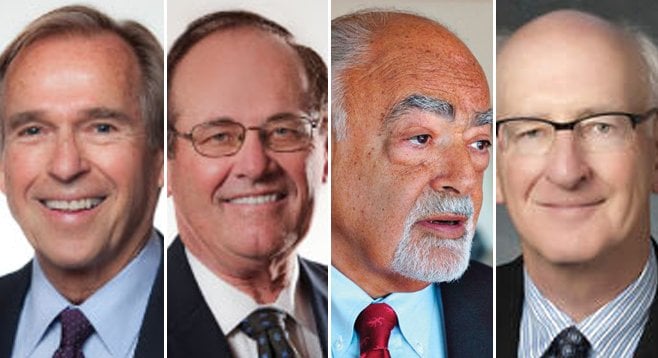
When I was in first grade, the school janitor asked what my father did for a living. I said he was a stockbroker. He said, “Oh, one of those gamblers.” I cried all the way home and told my mother what the janitor had said. She couldn’t stifle a laugh.
Now, 70 years later, it’s obvious that the janitor was prescient. About 75 percent of stock transactions in the United States are done through rapid-fire, computer-guided buying and selling, called high-frequency trading. A stock may be bought one second and sold the next. The firms trade all day for penny and nickel profits and then, generally, liquidate their positions at the end of the day. It’s day trading on steroids, involving billions of dollars.
In addition to high-frequency trading, there are other rapid-speed buy-sell games, such as those that occur on bank trading desks. As lightning-fast trading has come to dominate the market, small investors (who put money in mutual funds or buy individual stocks through brokerage houses) have little sway in market activity.
Indeed, the little guys and gals seem to be backing out of stocks. That’s not surprising, because old-style investors know that the Wall Street gambling game, like the one in Las Vegas, is rigged for the house. For example, the high-frequency trading machines can pick up information that has not yet shown up on the news screen. That smacks of front running, which is the unethical practice of a broker buying himself 1000 shares of a stock, knowing that his firm will shortly buy 500,000 shares of it.
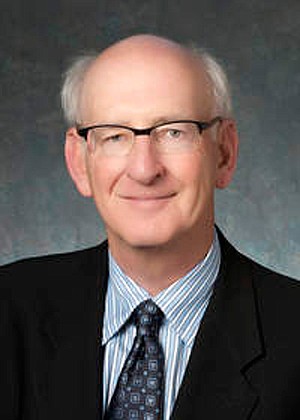
“The only question is why Sheldon Adelson is not in the high-frequency trading business,” cracks Michael Stolper of Stolper & Co. (Adelson, owner of casinos in Las Vegas, Macao, Singapore, and elsewhere, is the seventh-richest American, worth almost $25 billion, and a big donor to his favorite political candidates.)
With disturbing regularity, glitches erupt on Wall Street. There was the Flash Crash of May 2010. The Dow Jones Industrial Average plummeted almost 1000 points in minutes. Recently, computers of Knight Capital Group spit out numerous false orders; trading went blooey for half an hour. The May 18 Facebook initial public offering debacle is blamed partly on high-frequency traders, although underhanded underwriters may share the blame.
Bill Gross, investment guru for Newport Beach–based Pimco, wonders if people can continue to stand outside a game that is fixed for insiders. Over the past 100 years, stocks have risen 6.6 percent a year in real (inflation-adjusted) terms. But the economy has only grown a real 3.5 percent annually in that century. Why should stocks almost double the rate of growth of the economy? People have been raised to believe that in the long run, stocks always go up. But this is a “commonsensical flaw much like that of a chain letter or, yes — a Ponzi scheme,” writes Gross. He doesn’t mention it, but people also thought real estate values only went up until…well, you know what happened.
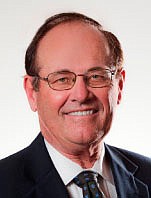
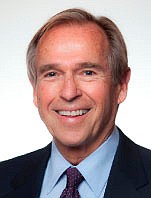
Defenders of ultrasonic trading say it provides liquidity to the market. Maybe, but the collateral damage might offset any advantage. San Diego’s Messner & Smith money management firm points out that “The stock market has the primary function of raising money for business. [High-frequency trading] does not contribute to raising capital in any form.” The firm warns its clients that one ramification of high-frequency trading is that “volatility of the overall market and individual stocks is likely to remain high.”
Stolper points out that high-frequency trading is fixated on capturing mathematical anomalies and has little or nothing to do with basic functions of markets. “It’s the dark side of all these mathematicians getting interested in finance. But the fact that this has unintended purposes and unsettling effects — what can we do about it?” he asks.
One academic study indicates that superfast trading works best with blue-chip stocks in generally rising markets. In turbulent, falling markets, the strategy doesn’t work so well — in fact, traders may just turn off their machines during a downward cascade.
This suggests that high-frequency trading has a bullish bias. That could in part explain why since early 2009 the economy has grown extremely slowly while stocks have doubled. That possible bullish bias has profound implications. We have seen in the past three years that central banks can run up stocks by hinting of future liquidity or by actually providing it with lower interest rates and other money-gushing strategies. Possibly the high-frequency traders rev up their machines when central banks move or suggest they will move. That could mean central banks are using high-frequency traders to manipulate stocks upward.
Stolper agrees that there could be “less liquidity going south than going north,” but he does not think the Federal Reserve is attempting to pump up stocks artificially.
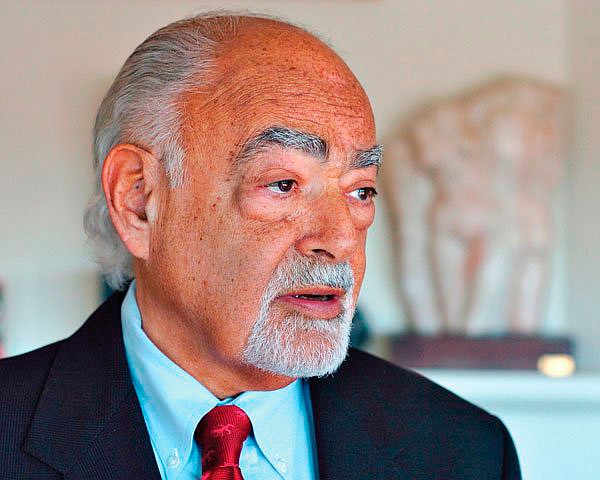
Arthur Lipper III of Del Mar, member of a legendary Wall Street family, notes, “Central bankers have always been able to move markets by hinting at or promising future moves. The only difference now is that the professional speculators are much more determinative of market moves than individual investors used to be, and the perspective of the [high-frequency traders] is very, very short-term focused.”
Lipper says that “Markets have always had casino elements,” but not like that which today’s lightning-fast traders are providing. On balance, “I do not see [high-frequency trading] as a positive for individual investors.”
Some say a transaction tax would tame the supersonic trading. Lipper disagrees, saying, “Smart money will go offshore, and many of the rich will follow.” So, that tax wouldn’t work, but he would like to see reinstatement of the Glass-Steagall Act of 1933 that called for separation of banking and securities activities. “Deposit-taking institutions should be banned from principal trading.” Some of the largest banks are high-speed traders.
And they are picking our pockets — in milliseconds. ■


When I was in first grade, the school janitor asked what my father did for a living. I said he was a stockbroker. He said, “Oh, one of those gamblers.” I cried all the way home and told my mother what the janitor had said. She couldn’t stifle a laugh.
Now, 70 years later, it’s obvious that the janitor was prescient. About 75 percent of stock transactions in the United States are done through rapid-fire, computer-guided buying and selling, called high-frequency trading. A stock may be bought one second and sold the next. The firms trade all day for penny and nickel profits and then, generally, liquidate their positions at the end of the day. It’s day trading on steroids, involving billions of dollars.
In addition to high-frequency trading, there are other rapid-speed buy-sell games, such as those that occur on bank trading desks. As lightning-fast trading has come to dominate the market, small investors (who put money in mutual funds or buy individual stocks through brokerage houses) have little sway in market activity.
Indeed, the little guys and gals seem to be backing out of stocks. That’s not surprising, because old-style investors know that the Wall Street gambling game, like the one in Las Vegas, is rigged for the house. For example, the high-frequency trading machines can pick up information that has not yet shown up on the news screen. That smacks of front running, which is the unethical practice of a broker buying himself 1000 shares of a stock, knowing that his firm will shortly buy 500,000 shares of it.

“The only question is why Sheldon Adelson is not in the high-frequency trading business,” cracks Michael Stolper of Stolper & Co. (Adelson, owner of casinos in Las Vegas, Macao, Singapore, and elsewhere, is the seventh-richest American, worth almost $25 billion, and a big donor to his favorite political candidates.)
With disturbing regularity, glitches erupt on Wall Street. There was the Flash Crash of May 2010. The Dow Jones Industrial Average plummeted almost 1000 points in minutes. Recently, computers of Knight Capital Group spit out numerous false orders; trading went blooey for half an hour. The May 18 Facebook initial public offering debacle is blamed partly on high-frequency traders, although underhanded underwriters may share the blame.
Bill Gross, investment guru for Newport Beach–based Pimco, wonders if people can continue to stand outside a game that is fixed for insiders. Over the past 100 years, stocks have risen 6.6 percent a year in real (inflation-adjusted) terms. But the economy has only grown a real 3.5 percent annually in that century. Why should stocks almost double the rate of growth of the economy? People have been raised to believe that in the long run, stocks always go up. But this is a “commonsensical flaw much like that of a chain letter or, yes — a Ponzi scheme,” writes Gross. He doesn’t mention it, but people also thought real estate values only went up until…well, you know what happened.


Defenders of ultrasonic trading say it provides liquidity to the market. Maybe, but the collateral damage might offset any advantage. San Diego’s Messner & Smith money management firm points out that “The stock market has the primary function of raising money for business. [High-frequency trading] does not contribute to raising capital in any form.” The firm warns its clients that one ramification of high-frequency trading is that “volatility of the overall market and individual stocks is likely to remain high.”
Stolper points out that high-frequency trading is fixated on capturing mathematical anomalies and has little or nothing to do with basic functions of markets. “It’s the dark side of all these mathematicians getting interested in finance. But the fact that this has unintended purposes and unsettling effects — what can we do about it?” he asks.
One academic study indicates that superfast trading works best with blue-chip stocks in generally rising markets. In turbulent, falling markets, the strategy doesn’t work so well — in fact, traders may just turn off their machines during a downward cascade.
This suggests that high-frequency trading has a bullish bias. That could in part explain why since early 2009 the economy has grown extremely slowly while stocks have doubled. That possible bullish bias has profound implications. We have seen in the past three years that central banks can run up stocks by hinting of future liquidity or by actually providing it with lower interest rates and other money-gushing strategies. Possibly the high-frequency traders rev up their machines when central banks move or suggest they will move. That could mean central banks are using high-frequency traders to manipulate stocks upward.
Stolper agrees that there could be “less liquidity going south than going north,” but he does not think the Federal Reserve is attempting to pump up stocks artificially.

Arthur Lipper III of Del Mar, member of a legendary Wall Street family, notes, “Central bankers have always been able to move markets by hinting at or promising future moves. The only difference now is that the professional speculators are much more determinative of market moves than individual investors used to be, and the perspective of the [high-frequency traders] is very, very short-term focused.”
Lipper says that “Markets have always had casino elements,” but not like that which today’s lightning-fast traders are providing. On balance, “I do not see [high-frequency trading] as a positive for individual investors.”
Some say a transaction tax would tame the supersonic trading. Lipper disagrees, saying, “Smart money will go offshore, and many of the rich will follow.” So, that tax wouldn’t work, but he would like to see reinstatement of the Glass-Steagall Act of 1933 that called for separation of banking and securities activities. “Deposit-taking institutions should be banned from principal trading.” Some of the largest banks are high-speed traders.
And they are picking our pockets — in milliseconds. ■
Comments